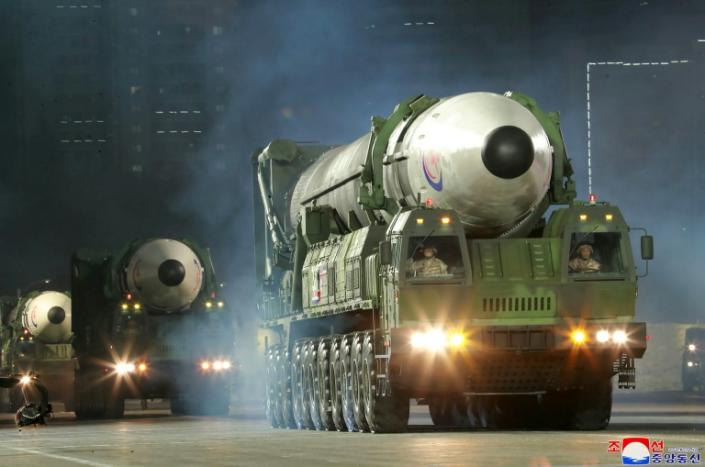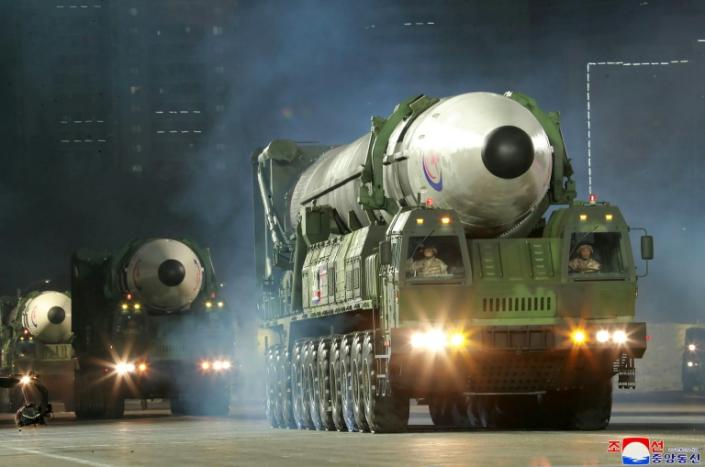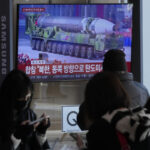
North Korea fired a suspected intercontinental ballistic missile Friday, Seoul’s military said, its second launch in two days, which Japan said had splashed down in its exclusive economic zone.
Seoul’s Joint Chiefs of Staff said it had “detected a presumed long-range ballistic missile around 10:15 (0115 GMT) fired from the Sunan area in Pyongyang towards the East Sea,” referring to the body of water also known as the Sea of Japan.
South Korea’s National Security Council met Friday to discuss the presumed ICBM launch, the presidential office said.
Tokyo also confirmed the launch, with Japanese Prime Minister Fumio Kishida saying it was believed to have fallen in waters within the country’s exclusive economic zone (EEZ) off the northern region of Hokkaido.
“The ballistic missile launched by North Korea is believed to have landed in our EEZ west of Hokkaido,” Kishida told reporters on the sidelines of a Bangkok summit, calling the launch “absolutely unacceptable”.
He added there were no initial reports of damage to ships or aircraft.
Seoul-based specialist site NK News reported that photos and videos taken from Pyongyang showed a white contrail in the sky that was visible from the city.
The launch comes a day after North Korea fired a short-range ballistic missile as its minister of foreign affairs, Choe Son Hui, warned Pyongyang would take “fiercer” military action if the United States strengthened its “extended deterrence” commitment to regional allies.
Washington has been seeking to boost regional security cooperation and ramp up joint military drills in response to increasing provocations from the nuclear-armed North, which views all such moves as evidence of US aggression.
US President Joe Biden discussed North Korea’s recent missile tests with Chinese counterpart Xi Jinping earlier this week and also spoke with leaders from Tokyo and Seoul, as fears grow that the reclusive regime will soon carry out its seventh nuclear test.
North Korea was also top of the agenda when leaders of China and Japan held their first face-to-face talks in three years Thursday at the Asia-Pacific Economic Cooperation (APEC) forum in Bangkok.
Experts said the launch of one of North Korea’s most powerful weapons was a clear sign leader Kim Jong Un was displeased by the recent talks.
“Now, it’s estimated to be an ICBM, if that’s the case, it is a clear message to the US and Japan,” said Han Kwon-hee, manager of the Missile Strategy Forum.
– Repeated launches –
Earlier this month, North Korea conducted a flurry of launches, including an ICBM, which Seoul said at the time appeared to have failed.
Pyongyang also fired a short-range ballistic missile that crossed the de facto maritime border between the two countries and landed near the South’s territorial waters for the first time since the end of the Korean War in 1953.
President Yoon said at the time that it was “effectively a territorial invasion”.
Both launches were part of a November 2 barrage in which Pyongyang fired 23 missiles — more than it launched during the entirety of 2017, the year of “fire and fury” when Kim traded barbs with then US president Donald Trump on Twitter and in state media.
Experts say North Korea is seizing the opportunity to conduct banned missile tests, confident of escaping further UN sanctions due to Ukraine-linked gridlock at the United Nations.
China, Pyongyang’s main diplomatic and economic ally, joined Russia in May in vetoing a US-led bid at the UN Security Council to tighten sanctions on North Korea.
Washington has responded to North Korea’s sanction-busting missile tests by extending exercises with South Korea and deploying a strategic bomber.
Pyongyang has also been under a self-imposed coronavirus blockage since early 2020, which experts say would limit the impact of any additional external sanctions.
kjk/ceb/cwl




